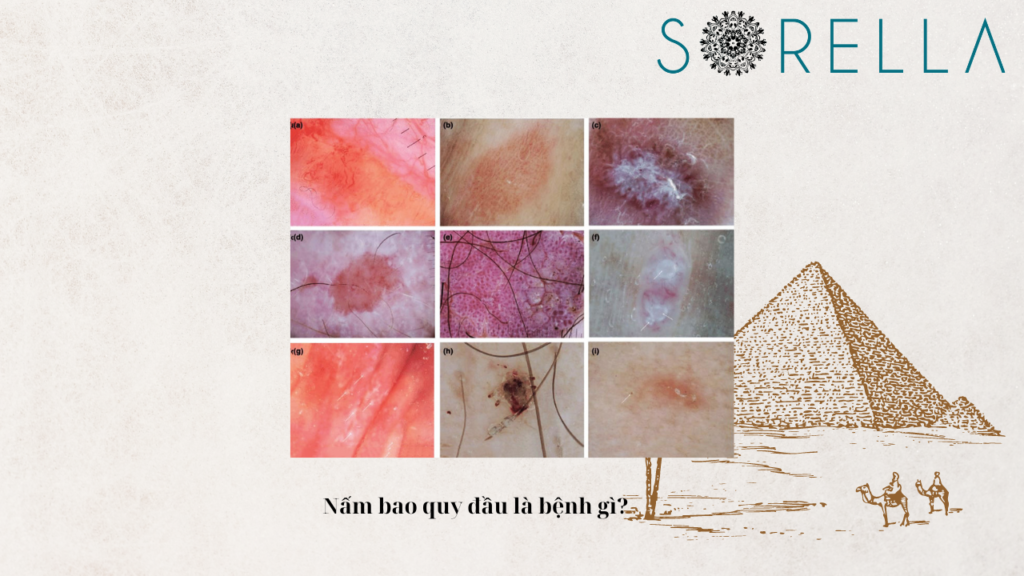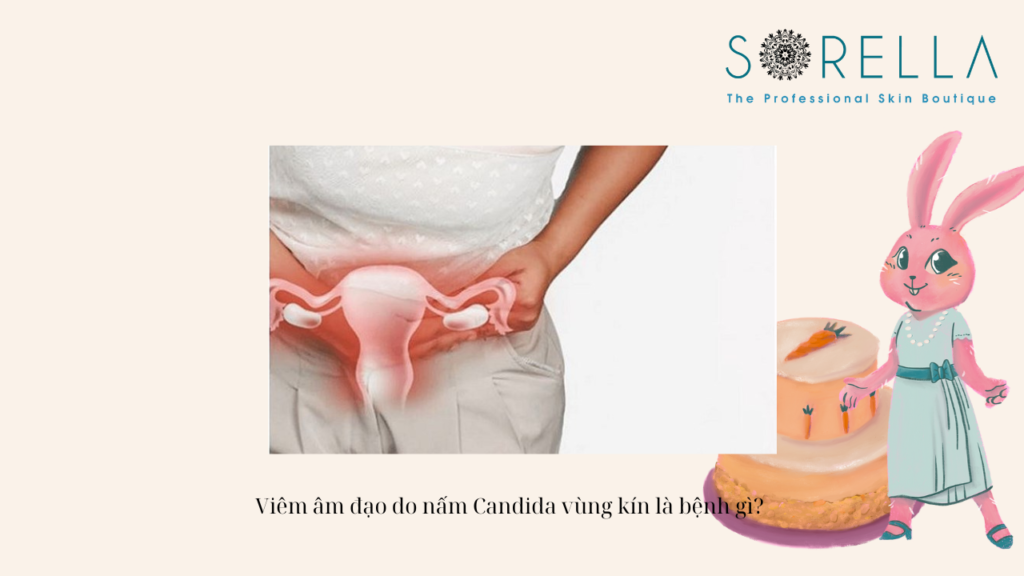Tin tức và sự kiện
Capsular Contracture After Breast Augmentation: 3+ Symptoms, Causes, and Treatment
How is capsular contracture after breast augmentation? Capsular contracture is the condition where a hardened fibrous capsule forms around the breast implant. Up to 75% of capsular contracture cases occur more than 2 years after implantation. About 1 in 6 breast augmentation cases will result in some degree of capsular contracture.
Prolonged capsular contracture can cause chronic pain and changes in breast shape. So, what exactly is capsular contracture after breast augmentation? What are the signs, causes, and treatment options?

What is capsular contracture after breast augmentation?
What is capsular contracture after breast augmentation? Capsular contracture after breast augmentation occurs when scar tissue forms a “capsule” around the implanted tissue, which is a common component of the wound healing process. The body reacts to any foreign object by gradually isolating it with scar tissue.
In the case of breast implants, this can be beneficial as the capsule stabilizes the implant in place, preventing it from shifting. However, for some individuals, the scar tissue may become thicker and contract around the breast implant. This can be associated with aesthetic complications and in severe cases can cause significant breast discomfort.
Research indicates that about 1 in 6 breast augmentation cases result in some degree of capsular contracture, although not all cases manifest obvious symptoms. The severity of capsular contracture is determined by an evaluation system.
Classification of breast capsular contracture
Grade 1: Grade 1 capsular contracture has no symptoms. The presence of scar tissue around the breast implant is not related to breast size, shape, or structure. The breasts appear normal and remain soft to the touch.
Grade 2: Grade 2 capsular contracture presents with minor cosmetic symptoms. The breasts still have a natural appearance but feel slightly firm to the touch.
Grade 3: Grade 3 capsular contracture shows noticeable cosmetic symptoms. The breasts feel firm upon touch and exhibit signs of deformation, such as swelling or distortion. However, mild capsular contracture may not cause breast pain (if present).
Grade 4: Similar to grade 3 capsular contracture, grade 4 capsular contracture results in a firm and distorted nipple appearance. Patients with grade 4 capsular contracture also experience breast tenderness, swelling, and severe pain upon touch.
Generally, capsular contracture occurs during the treatment of a pathological condition. About 75% of all capsular contracture cases occur within approximately 2 years after breast implantation.
Sometimes, capsular contracture may occur several years after breast augmentation surgery, but this is individual and not a rule. If this happens, patients should also undergo breast examinations to check for rupture. Implant rupture is the most common cause of late capsular contracture.
Causes of breast capsular contracture
Clinical physicians have several hypotheses about the causes of capsular contracture, and the specific risk factors for this condition vary depending on each patient.
As a breast augmentation surgeon, it’s essential to remember that this condition is not inherently dangerous or life-threatening. Saline implants contain a sterile saline solution that can be easily absorbed by the body without adverse effects, while silicone gel implants are made from inert silicone.

Capsular contracture can occur after any type of tissue graft is implanted into the body, and this condition is not unique to breast augmentation. Capsular contracture is often frightening when it occurs after breast augmentation surgery and can alter the appearance of the breasts, leading to aesthetic concerns for patients.
Capsular contracture rarely poses a threat to a patient’s life unless the breast implant ruptures (for gel-filled implants, rupture can even lead to death).
Here are some reasons proposed:
Scar tissue: Scientists believe that genes influence who develops capsular contracture and who does not. If you have a family history of autoimmune disease or if you have family members who have developed thick scar tissue after trauma (such as having issues with medical implants), you may be at a much higher risk of developing this condition.
However, it is not possible to predict who will develop capsular contracture “randomly” (i.e., cases without any discernible external factors). Because capsular contracture has a high likelihood of recurrence, you should not let fear of developing this condition deter you from undergoing breast augmentation surgery.
Infection from bacteria
Sometimes, capsular contracture occurs due to pathological factors rather than the patient’s poor response to the presence of breast implants.
In addition to the issue of implant rupture, there is a belief in something called “biofilm” that also contributes to the development of this condition. Biofilm is a delicate layer of bacteria that develops within breast tissue after a strain of bacteria (mostly staphylococcus bacteria) is introduced into the breast tissue through the surgical process.
This type of bacteria can cause a low-grade, chronic infection that may not produce significant symptoms (such as high fever or severe fatigue).
However, when the body fights against severe infection, it produces a lot of scar tissue, which can lead to capsular contracture. The biofilm theory explains the contraction of the capsule, and this has been confirmed by a recent experiment conducted on pigs implanted with medical-grade silicone.
The study found a significant improvement in the ability to contract the fibrous capsule in pigs with staphylococcus bacteria on the skin at the time of implantation. Particularly noteworthy is that staphylococcal infection during breast augmentation surgery is not from an unsanitary work environment.
Some people naturally carry staphylococcal bacteria because the bacteria are always present on their skin and usually do not cause symptoms. Only when this group of people becomes infected through the skin can these bacteria potentially cause any harmful consequences?
Although creating a safe working environment can help minimize the risk of staphylococcal infection, not everyone can eliminate 100% of the present bacteria.
Blood clots and pus accumulation during breast augmentation surgery
Rare complications of breast augmentation surgery include hematoma and seroma (blood clots that may appear after invasive surgery), which have also been demonstrated to increase the risk of capsular contracture.
Some scientists believe that blood clots may increase the ability of the fibrous capsule to contract by supplying the necessary oxygen (in the form of blood) to bacteria, thereby promoting the development of biofilm.

If radiation therapy is performed after breast implant surgery, radiation therapy may increase the risk of capsular contracture. In addition, some other risk factors may be mentioned:
- Implant rupture.
- Bleeding from cut tissue after surgery (causing blood loss).
- Infection (a thin layer of bacteria develops in the implanted tissue).
- Family history of autoimmune disease or history of scar tissue formation after trauma.
Common signs of breast capsular contracture
Depending on the degree, capsular contracture episodes will have specific manifestations such as:
- Tightness in the chest area.
- Breasts larger than normal when touched.
- Swollen, sagging breasts, deformed nipples.
- Changes in breast shape.
- Feeling throbbing chest pain.
Symptoms of capsular contracture may persist for several months after breast implant placement or even years later. Patients may consider corrective surgery for capsular contracture if the condition causes chronic pain, difficulty breathing, and changes in posture, and breast shape.
Is breast capsular contracture harmful?
Is breast capsular contracture harmful? Capsular contracture of the breast implant is usually not harmful to life, except when the patient’s breast implant ruptures (cases of gel-filled implant rupture can lead to infection).
Breast capsular contracture poses a danger when it occurs after breast augmentation due to changes in breast shape.

Complications of capsular contracture
Is breast capsular contracture harmful? Sometimes, even if a cosmetic surgeon is highly skilled, complications may occur during or after surgery because each patient’s body is different. For example, the structure of connective tissue may vary from patient to patient.
This means that the wound healing process for each patient is unique.
This is why some people tend to develop thick scar tissue after any type of external wound, while others may have a deep-cut wound and develop gradually smaller scars over time.
A common example of this difference is why some people develop stretch marks after pregnancy, even though they do everything to prevent scarring, while others have no stretch marks at all after pregnancy.
Additionally, each person’s immune system responds differently to stimulation, and the immune system of some patients poorly responds to medical implants.
Of course, the risk of complications during cosmetic surgery is extremely low, thanks to advances in surgical techniques. And doctors have accurately predicted complications in patients with low surgical risk.
Patients who develop thick scar tissue may be advised against cosmetic surgery, or doctors may use surgical techniques through incisions in the armpits (for example: placing breast implants through an incision under the armpit) to move scars away from view.
Patients with weakened immune systems or other autoimmune diseases are often advised against surgery and may opt for less invasive cosmetic methods.
Similarly, some techniques may be used after surgery, including the Aspen functional recovery technique, which helps treat complications and change the patient’s appearance. One of the most effective methods when Aspen is used is to treat capsular contracture after breast augmentation surgery.
How is capsular contracture diagnosed?
When there are suspected symptoms of breast capsular contracture, it is essential to immediately see a breast specialist, a surgeon specializing in breast cosmetic surgery, for diagnosis and timely treatment.
During the examination, the doctor will advise on each method, breast implant materials, and necessary parameters for breast augmentation surgery.
Subsequently, the doctor will conduct a thorough examination to determine the extent of deformation and firmness of the breasts. To diagnose capsular contracture and identify other factors that deform the breast, the doctor will order some tests, including:
Magnetic resonance imaging (MRI): a diagnostic technique for capsular contracture and other complications of breast implants. MRI provides highly accurate images, helping to describe the breast implant and surrounding tissue.
Breast imaging ultrasound: an important test for diagnosing breast cancer. This technique also helps diagnose mild to moderate breast capsular contracture. However, breast imaging ultrasound is only useful for severe capsular contracture cases, as it does not provide enough data for accurate diagnosis.
See more: Abusing cosmetics containing corticoids – 3+ hiding serious harm
Treatment of capsular contracture
Previously, available treatment methods for patients with capsular contracture after breast augmentation were quite limited. Surgery often required multiple revisions and was a lengthy, costly, and sometimes ineffective treatment.
During surgery, the patient’s breast implant is removed, and treated with antibiotics. When the inflammation is stable, the patient may choose to reinsert the breast implant.
However, because the surgical process can easily lead to secondary invasive infections, many patients in this group have experienced recurrent capsular contracture.

In capsular contracture surgery, the surgeon will remove the existing breast implant along with the surrounding tissue capsule, and place a new implant wrapped in a dermal matrix material (a skin regenerative material reinforced by collagen). The dermal matrix provides an additional defense layer, thus a new type of scar tissue will form around it.
Open Capsulotomy
During an open capsulotomy procedure, the surgeon makes several incisions to cut open the fibrous capsule surrounding the breast implant, possibly removing some of the capsules. The goal is to allow the capsule to expand, providing more space for the implant to move around.
In some cases, the surgeon may completely remove your current implant and replace the old implant with a new one.
Breast Reconstruction with Flap Surgery
In the procedure of breast reconstruction with autologous flap surgery, the surgeon removes the remaining breast tissue and contracted capsule, removes the implant, and reconstructs your breast using tissue grafted from another part of your body, such as tissue from the back muscle, latissimus dorsi, or gluteal muscle.
A significant advantage of this technique is its potential to eliminate the risk of recurrent capsular contracture and replace remaining breast tissue with silicone similar to preventative mastectomy.
However, breast reconstruction is a more challenging surgery with a longer recovery process, requiring an experienced plastic reconstructive surgeon and a specialist in breast surgery.
Preventing the Risk of Breast Capsular Contracture
While it is not possible to prevent capsular contracture in all women undergoing breast surgery, there are several measures to reduce the risk of this condition. Aesthetically, surgeons are using various preventative measures including:
Regular Patient Screening
Patients are diagnosed with medical conditions that may increase the risk of infection and bruising. Patients are also advised not to smoke, as tobacco smoke facilitates clot formation and slows the healing process.
Using the Correct Size of Breast Implant
Using too large a breast implant when the patient lacks natural breast tissue to support it increases the risk of capsular contracture. For a patient with a small chest who wishes to increase breast size, it is better to progress in stages, starting with a medium-sized implant and allowing the skin to stretch before placing a larger implant.
Moderate Cleaning of the Breast Implant
The more thoroughly a breast implant is cleaned before being placed into the patient’s breast, the higher the risk of bacterial infection. Therefore, surgeons strictly limit their contact with any breast implant before placing it into the patient’s body. Certified aesthetic surgeons work in sterile surgical facilities.
Using Textured Breast Implant Gel
Using breast implants with a textured surface, rather than a smooth one, has been shown to reduce the risk of capsular contracture. The textured surface of the gel material makes it harder for protruding scar tissue to form near the implant.
However, textured implants are not suitable for all patients, as the edges of the implant may be more easily detectable in some patients. They are also most suitable when placed under the pectoral muscle.
See more: Mesotherapy in Fat Reduction: 5+ Things You Need to Know About Mesotherapy
Placing the Breast Implant Under the Muscle
Placing the breast implant under the muscle can significantly reduce the risk of breast capsular contracture. The risk of capsular contracture is 8% – 12% over a lifetime when the implant is partially under the muscle.
In contrast, the risk of capsular contracture is 12% -18% over a lifetime when the implant is above the muscle. Furthermore, fully submuscular implants have a risk of capsular contracture of about 4% – 8% over a lifetime.
Breast Massage After Surgery
Massaging the breast area while it heals from breast augmentation surgery can help reduce capsular contracture by encouraging the breast tissues to remain soft. However, this method has not been scientifically proven.
Patients should never harm the breast tissues, even during recovery from surgery, without prior approval from their surgeon. Otherwise, you could damage the breast tissue, potentially due to capsular contracture.
Capsular contracture is unrelated to cancer; it is merely a normal immune response to foreign materials introduced into the body. This article has shared knowledge about what capsular contracture is, its signs, causes, and treatment.
Thus, if you experience any unusual symptoms in the breast, such as signs of capsular contracture due to breast implants, you should consult a breast specialist for examination, diagnosis, and timely treatment.
See more: 8+ Considerations When Returning to Youth with HIFU Skin Tightening Technology
Tư vấn chuyên môn bài viết:
TS.BÁC SĨ NGUYỄN HỮU QUANG
- Tác hại của việc thức khuya là gì? 5 tác hại nặng nề ảnh hưởng đến sức khỏe nếu bạn thức đêm thường xuyên
- Tóc thưa nên để kiểu gì? Top 10 kiểu tóc dành cho tóc thưa
- Top 5 sản phẩm chứa Azelaic Acid trong chăm sóc da được bác sĩ da liễu khuyên dùng
- Chi tiết dịch vụ tại tiêm Bio Aesthetics Point (BAP) tại Sorella Beauty & Spa
- Sự thật cần phải biết về các mô mỡ? 4 loại mỡ dưới da cần phân biệt
Bài viết cùng chủ đề:
-
Cách diệt chấy rận hiệu quả ngay tại nhà, 8 phương pháp tiêu diệt chấy rận hiệu quả
-
Có nên dùng khăn ướt để tẩy trang? Cẩn thận khi dùng khăn giấy ướt giúp chăm sóc làn da của bạn, 1 vài thành phần của giáy ướt có hại cho da
-
Nấm bao quy đầu là bệnh gì? 1 số nguyên nhân, dấu hiệu, chẩn đoán, điều trị
-
Viêm âm đạo do nấm Candida vùng kín là gì? 1 số nguyên nhân, triệu chứng


 中文 (中国)
中文 (中国) 한국어
한국어 English
English











